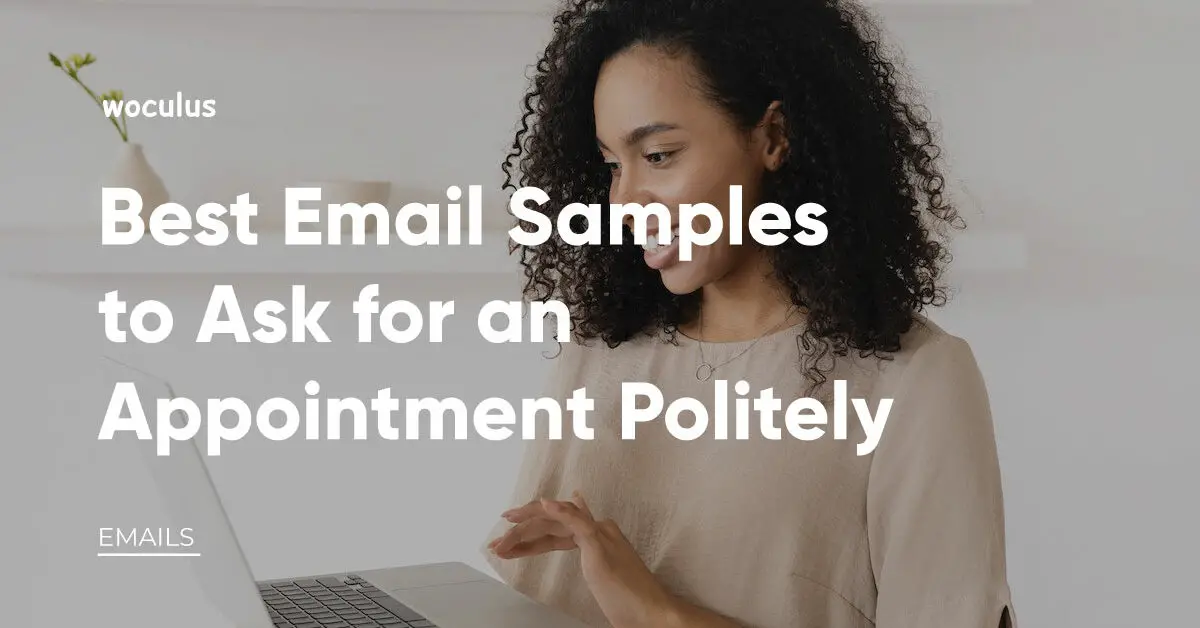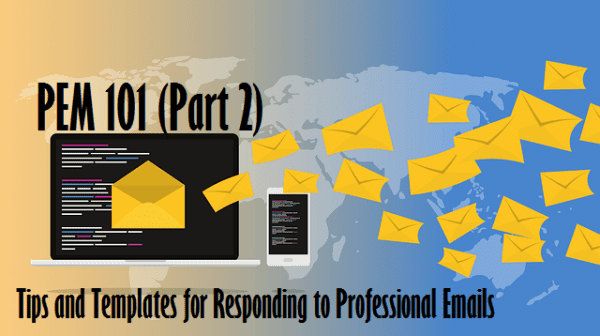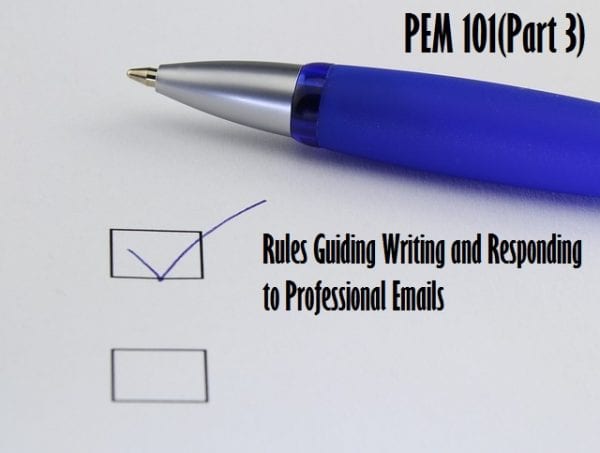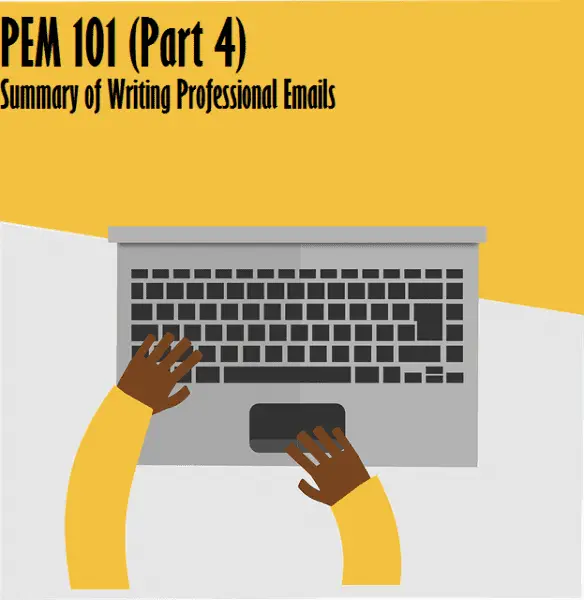Writing an email to ask for an appointment politely can seem like a daunting task, but it doesn’t have to be. To send an email asking for an appointment, all you need to do is: be clear and concise about why you’re requesting the appointment, respect the recipient’s time (this means being flexible with your schedule), and thank them for their time.
Everything above is what you need to send a good appointment request email. You have to understand that the recipient is doing you a favor, meaning you’re on the asking end. As a result, you need to ensure your email is polite.
In this article I’ll explain everything you need to know to write an appointment email and include the samples you’ll need to write the best appointment emails.
Also, read about effective strategies for contacting prospects on Facebook and LinkedIn as well as innovative ways to reach customers on their phones.
How to Ask for An Appointment Politely
Here are some very important tips you need to know on how to ask for an appointment in an email:
1. Subject Line Clarity
2. Thoughtful Greeting
3. Courteous Tone
4. Clarity and Brevity
5. Personalization
6. Clear Request or Message
7. Using Polite Phrases
8. Gratitude and Closing
1. Subject Line Clarity:
The journey of a polite email begins with the subject line. It should be concise, specific, and indicative of the email’s purpose. Clarity in the subject line not only helps the recipient understand the context at a glance but also shows your respect for their time and attention.
2. Thoughtful Greeting:
Open your email with a warm and appropriate greeting. “Dear,” followed by the recipient’s name, is a classic and respectful choice. Tailor the greeting to the level of formality you wish to convey – “Hi” or “Hello” can work in more casual settings.
3. Courteous Tone:
Politeness is the cornerstone of a well-written email. Use polite language throughout your message. Express gratitude, when relevant, and avoid using overly direct or confrontational phrases. Consider the recipient’s perspective to ensure your tone is respectful and considerate.
4. Clarity and Brevity:
Time is a valuable commodity, so keep your email concise and to the point. Clearly state the purpose of your email in the opening sentences. Use paragraphs to break down different points and make your email easy to scan. Bullet points can help organize complex information.
5. Personalization:
Demonstrate your genuine interest by including personalized details. Reference previous interactions or shared experiences to create a connection. This shows that you value the recipient as an individual rather than just another name on your contact list.
6. Clear Request or Message:
Make your purpose clear and specific. Whether you’re requesting information, scheduling a meeting, or offering assistance, be direct in your communication. Ambiguity can lead to confusion and delay.
7. Using Polite Phrases:
Incorporate polite phrases to enhance your email’s tone. Expressions like “Would you be so kind as to…” or “I would appreciate your assistance with…” can add a touch of elegance to your message.
8. Gratitude and Closing:
End your email on a positive note. Express gratitude for the recipient’s time and consideration, even if it’s a routine matter. Use a polite closing, such as “Best regards,” “Sincerely,” or “Thank you,” followed by your name.
9. Signature:
Include a professional signature that provides your contact details, job title, and any relevant links (like your LinkedIn profile). This not only makes it easy for the recipient to contact you but also adds a level of credibility to your email.
10. Proofreading:
Before hitting that “send” button, take a moment to proofread your email. Typos and grammatical errors can undermine your professionalism. Reading your email aloud can help catch any awkward phrasing or mistakes.
11. Avoiding Overuse of Emojis and Abbreviations:
While emojis and abbreviations might be suitable for casual correspondence, it’s best to avoid them in professional emails. They can come across as unprofessional and undermine the level of seriousness you wish to convey.
12. Responding Promptly:
Politeness extends to your response time as well. If you receive a response to your email, make an effort to reply promptly. Even if you need more time to address the query or request, a quick acknowledgment can go a long way in maintaining good rapport.
Sample 1: How to Ask for Availability for a Physical Meeting
Hello Jason, I'm writing this email with regards to the proposal you submitted to our company on the 4th of September. My partners and I have gone through your proposal and there are some details we'd like to talk discuss with you. Are you free for lunch at 9 AM on Monday? Let me know by Friday if that works for you. Looking forward to meeting with you. Regards, Samuel Bright
Sample 2: How to Ask for Availability for a Physical Meeting
Hello Clark, This is Jim from Woculus. It was great talking to you about a partnership between our firms. I discussed the idea with the CEO and he was just as interested as I was. Kindly let us know when you’d be free to discuss the plan more extensively. Do you have time next week Tuesday to grab a cup of coffee? Please let me know what your schedule is like. Regards, Karl
Sample 3: How to Ask for Availability for a Call
Dear Jasmine, My name is Jaden from Standard Alliance. We're sending this email with regards to your complaint about accessing your account. We sincerely apologize for any inconvenience you may have experienced. Would you be open to a short telephone conversation to find out more about the problem? My contact information is attached to this email. Please send me a message to schedule the call. Thank you. Regards, Jaden Customer Support Manager
Sample 4: How to Ask for Availability for a Call
Dear Christian, My name is Anna from Silicon Enterprise. We received your complaint about a delayed delivery. Upon checking our records, we discovered the package was delivered 72 hours after your order was confirmed. We would like to schedule a short phone call to clear up any discrepancies. Please reply to this email with an available time and date. We apologize for any inconvenience caused. Regards, Anna
Sample 5: How to Ask Availability for an Online Meeting
Hello Jasmine, This is Jackson from Octave enterprises. We received your email concerning the difficulty you experienced funding your account. To assist you with this problem we’d like to schedule an online meeting with you to walk you through the process of funding your account. Please select a preferred date and time for the meeting in the calendar link below. Thank you for choosing Octave. Regards, Jackson
Sample 6: How to Ask Availability for an Online Meeting
Hello Omari, We received your proposal to redesign our website. We’d like to schedule an online meeting to discuss the proposal further. A calendar link has been attached to this email, please select a date and time that’s convenient for you. Looking forward to meeting with you. Regards, Abdul Ahmed
Example Request for Appointment Email to Client
Subject: Request for a Meeting: Exploring New Opportunities Dear [Client's Name], I hope this email finds you well. I am writing to kindly request a meeting with you to discuss some exciting possibilities that could greatly benefit both our companies. As we've had a successful partnership in the past, I believe there are new avenues we can explore together. Your insights and expertise have always been invaluable, and I am eager to hear your thoughts on the potential collaboration. Could we please schedule a meeting at your earliest convenience? I am flexible with dates and times, so please let me know what works best for you. A virtual call would also be a convenient option if that suits your schedule. Thank you for considering my request. I look forward to the opportunity to connect and discuss how we can create a mutually beneficial partnership. Best Regards, [Your Name]
Sample Appointment Request Email
Subject: Meeting Request Dear [Recipient's Name], I hope this email finds you well. I am interested in discussing [topic] with you and would appreciate the opportunity to meet. Are you available for a brief meeting sometime next week? Please let me know your availability, and I will adjust my schedule accordingly. Thank you for considering my request. I look forward to the possibility of connecting. Best regards, [Your Name]
How to Ask for An Appointment Politely
Subject: Request for a Meeting Dear [Recipient's Name], I trust this email finds you well. I am writing to kindly request a meeting with you to discuss [topic of discussion]. Your expertise in this area is highly regarded, and I believe a conversation could greatly benefit both parties. I understand your time is valuable, and I assure you the meeting will be concise and focused. Could we find a suitable time next week to connect? I am flexible to accommodate your schedule. Thank you for considering my request. I look forward to the possibility of a fruitful discussion. Best regards, [Your Name]
Sample to Ask for an Appointment on WhatsApp
Hi [Name], I hope you're doing well. Would it be possible to schedule a meeting to discuss [topic]? Let me know a suitable time for you.
Hello! I've been looking forward to discussing [matter] with you. Can we find a time this week for a quick call?
Hey [Name], I value your insights on [subject]. Could we set up a virtual meeting to go over the details?
Hi there, hope you're having a great day. I was wondering if we could arrange a call to chat about [topic] and explore some ideas.
Hi [Name], I hope this message finds you. I'd appreciate your time for a brief call regarding [matter]. When would you be available?
Hey [Name], I noticed your interest in our [product/service] and I'd be delighted to provide more insights. Can we arrange a brief call to explore how we can enhance your operations?
Hello [Name], I've been reviewing your requirements and I believe our [solution] could be a great fit. Could we set up a call to discuss the details and answer any questions you have?
Hi [Name], I hope you're well. I'd love to chat about how our [product/service] can meet your business needs. Can we schedule a call to explore this further?
Conclusion
In conclusion, the art of writing a polite email is more than just a matter of formality. It’s a demonstration of respect, empathy, and effective communication. By mastering the elements mentioned above, you can ensure your emails are not only well-received but also contribute to building lasting professional relationships. Remember, each email you send is a reflection of your professionalism and attitude, so approach every message with care and consideration.






